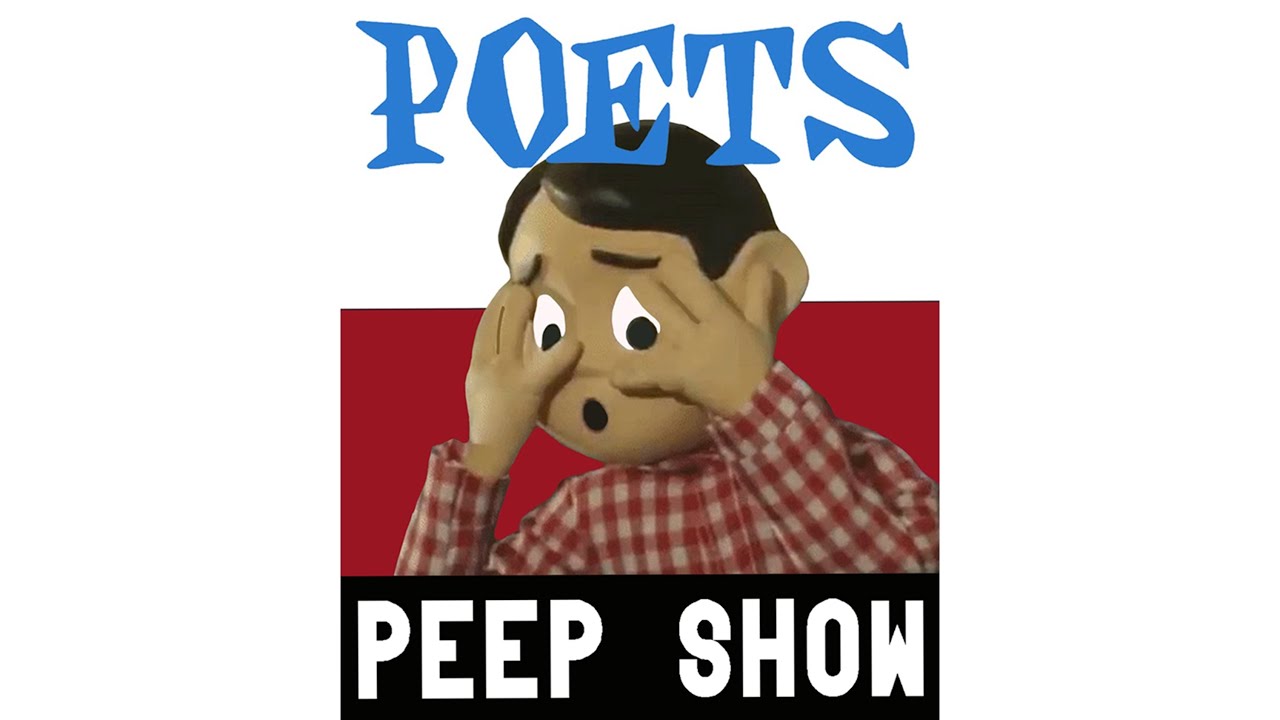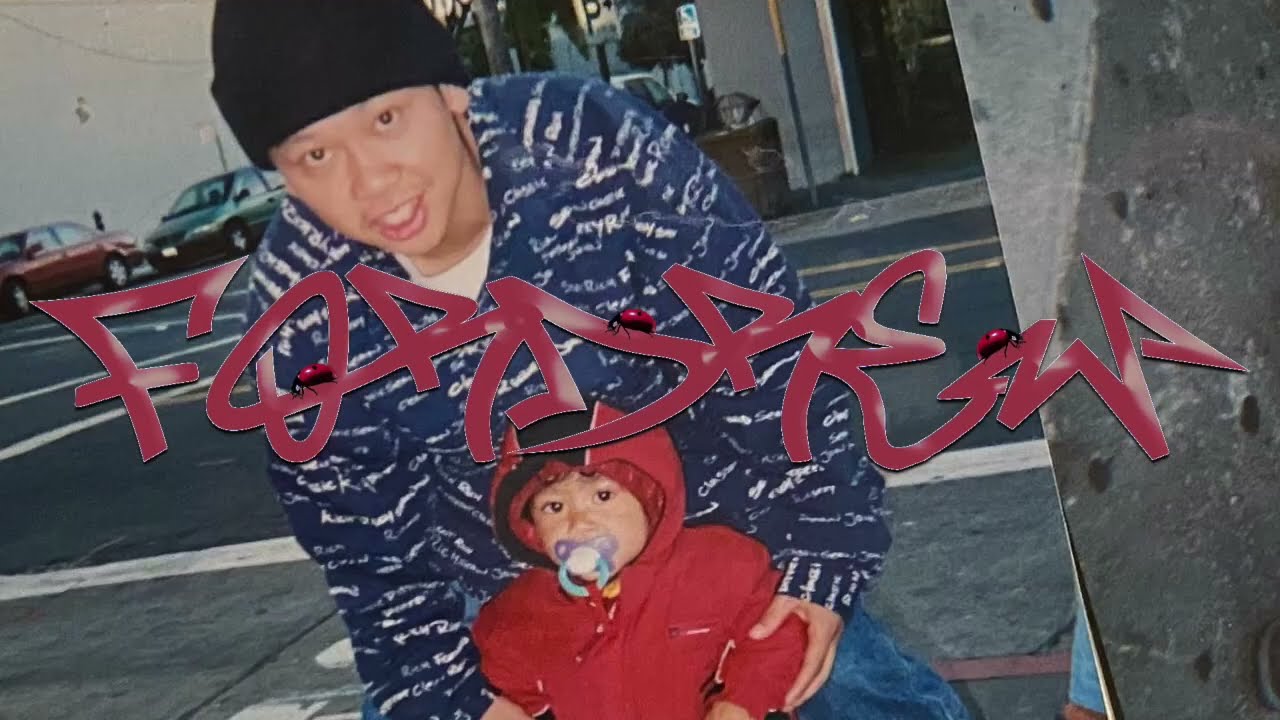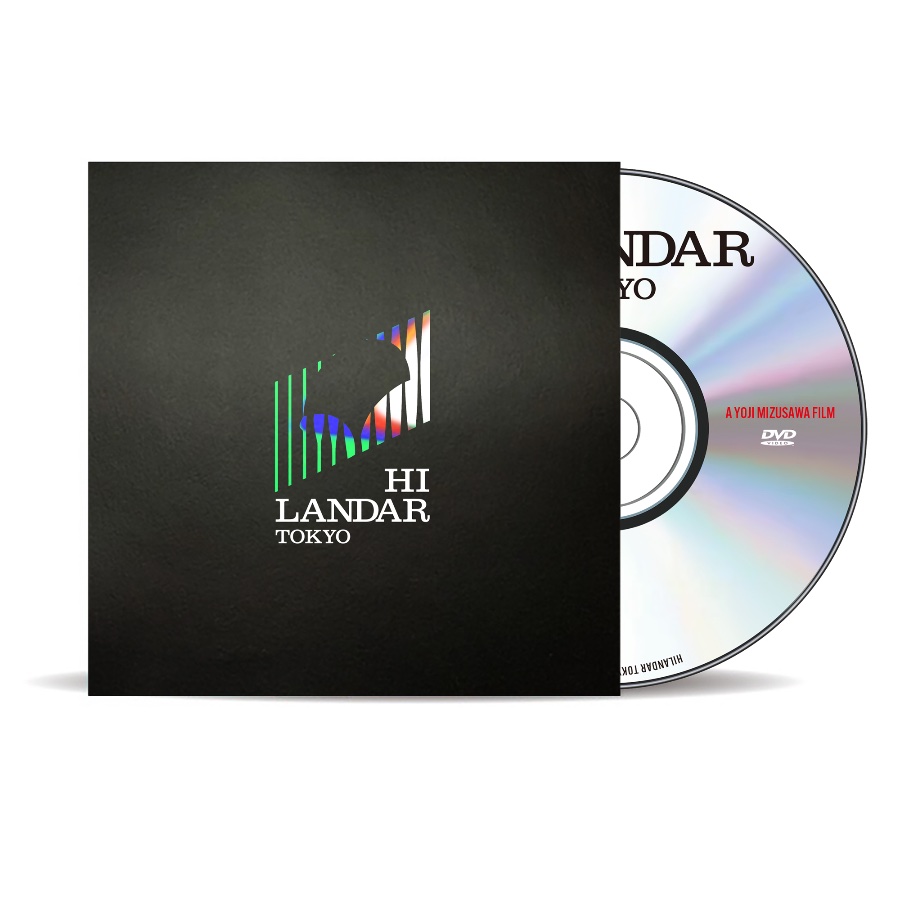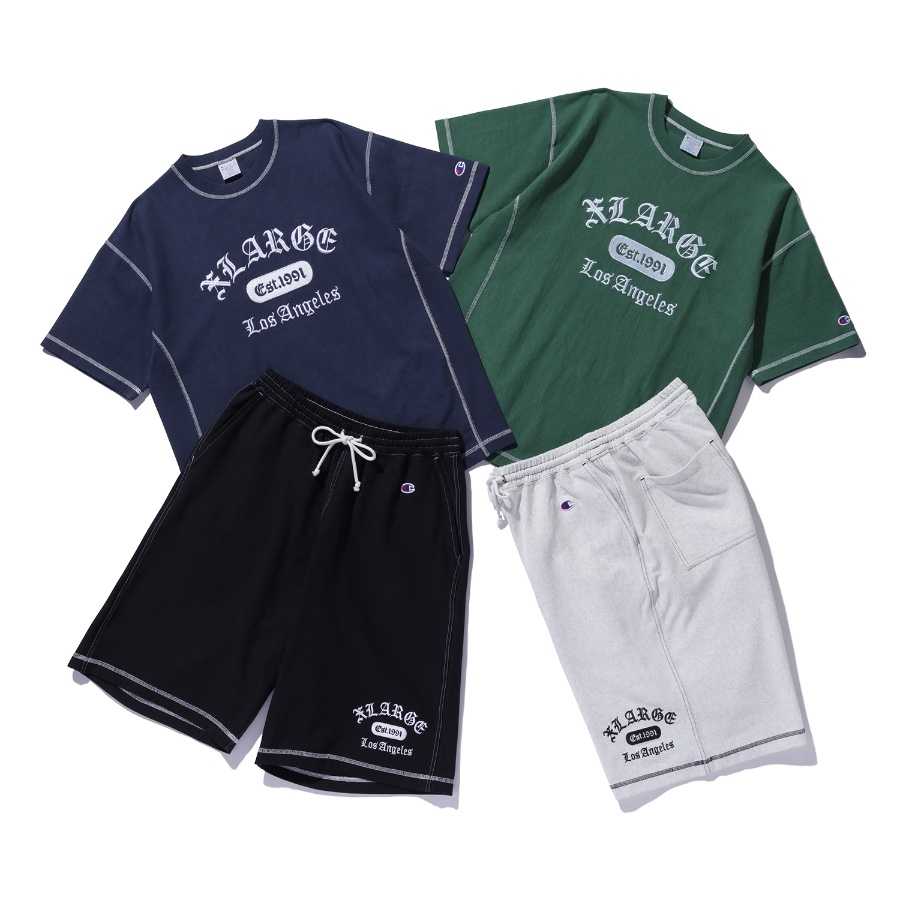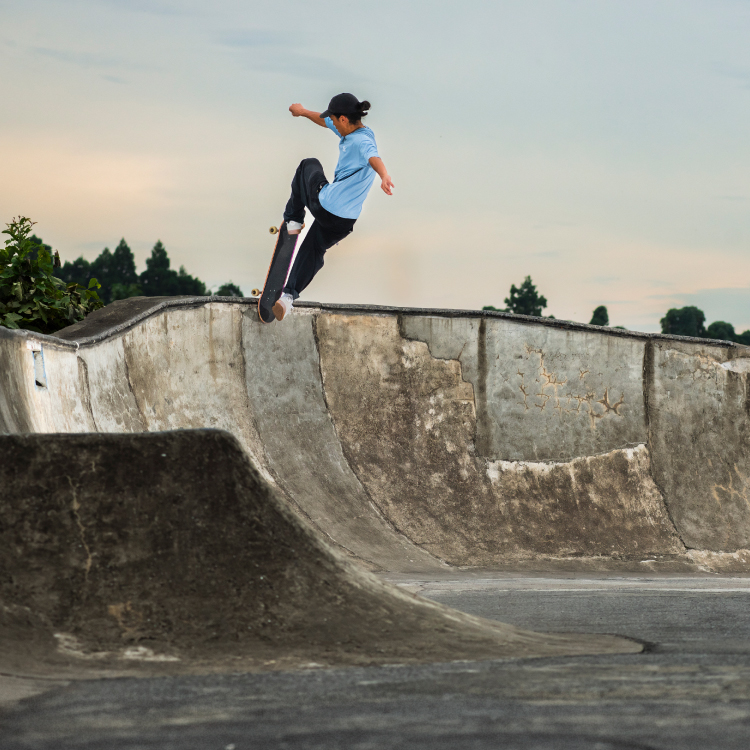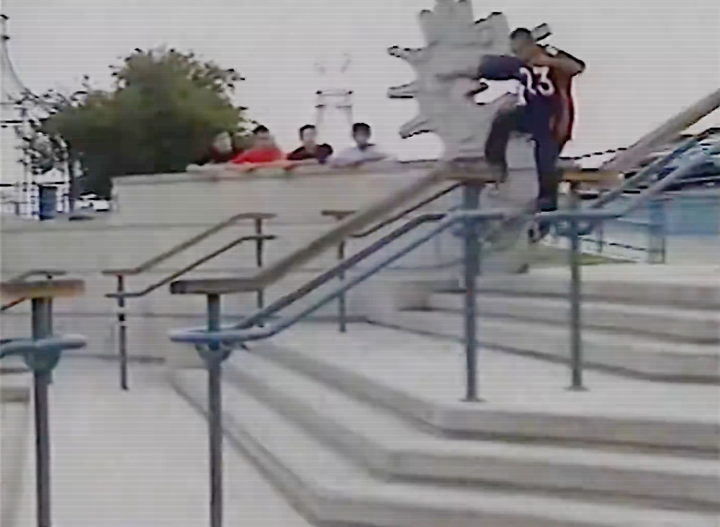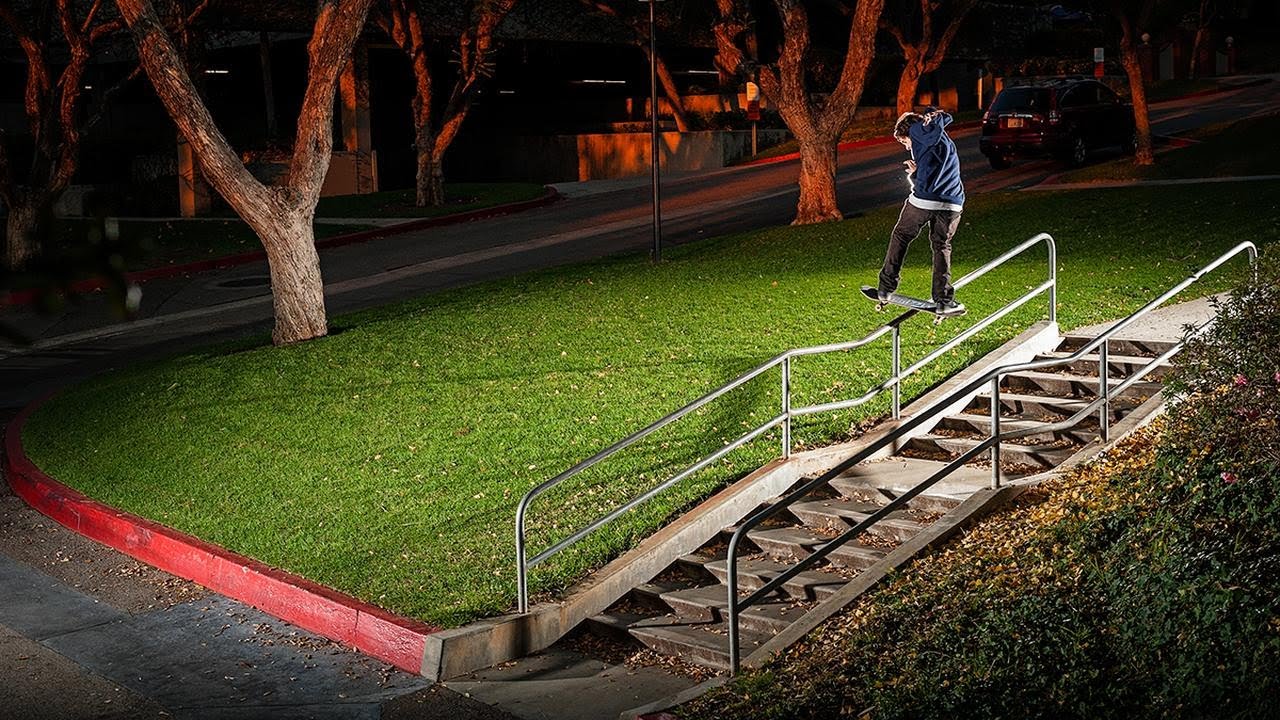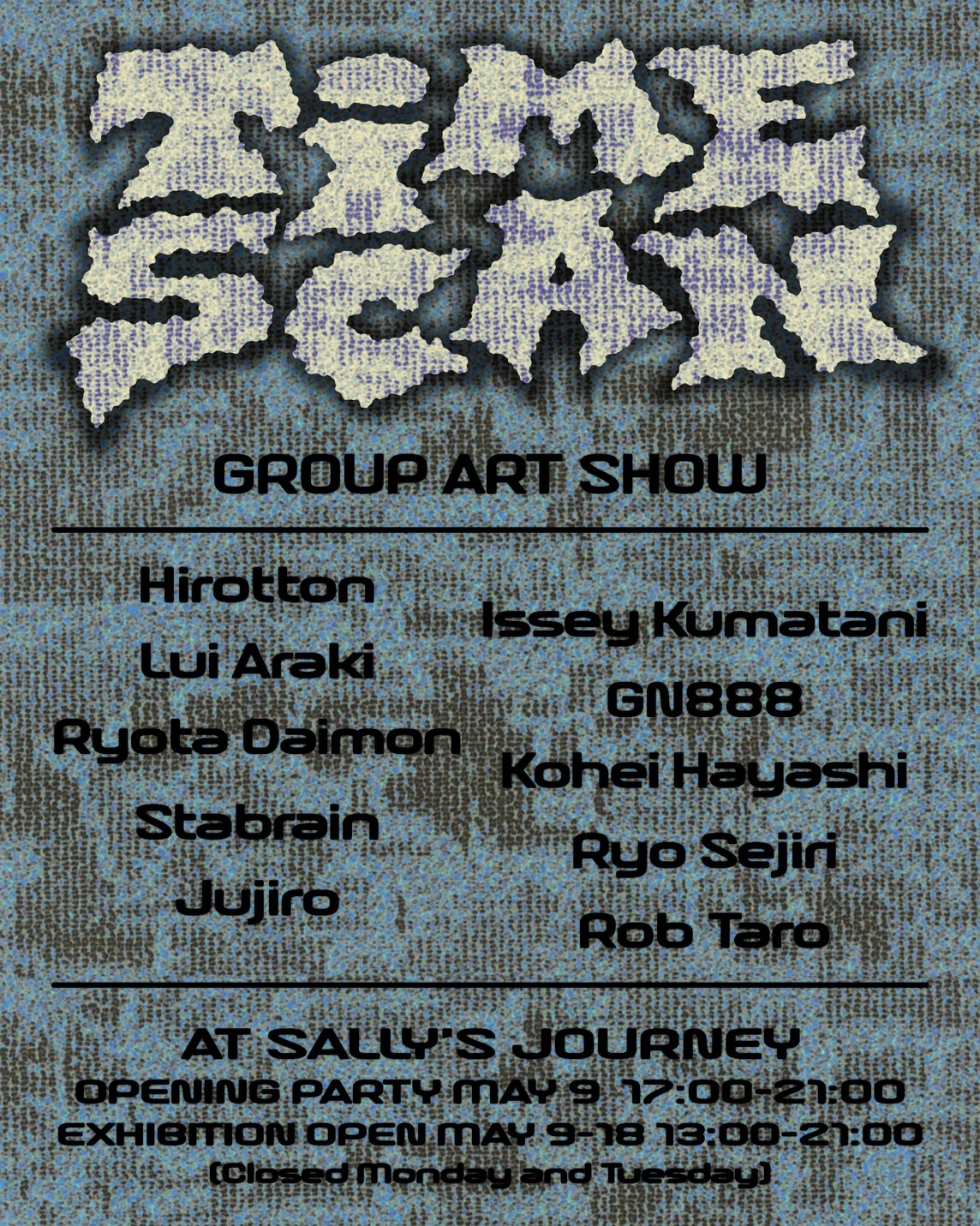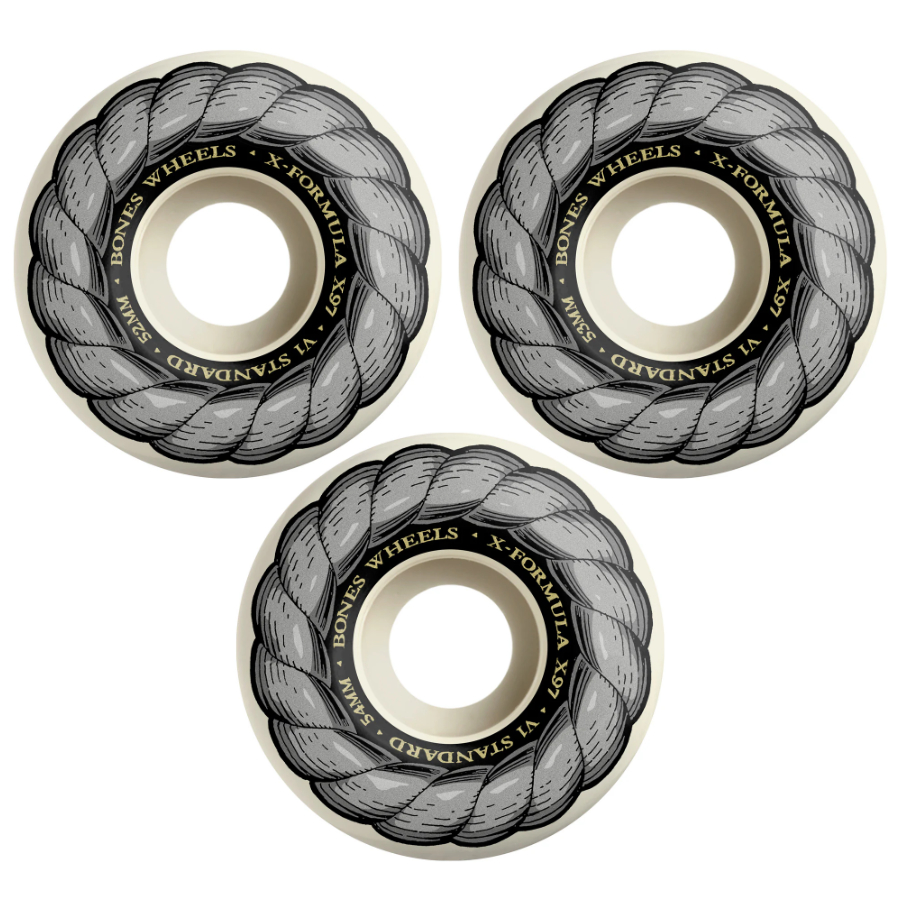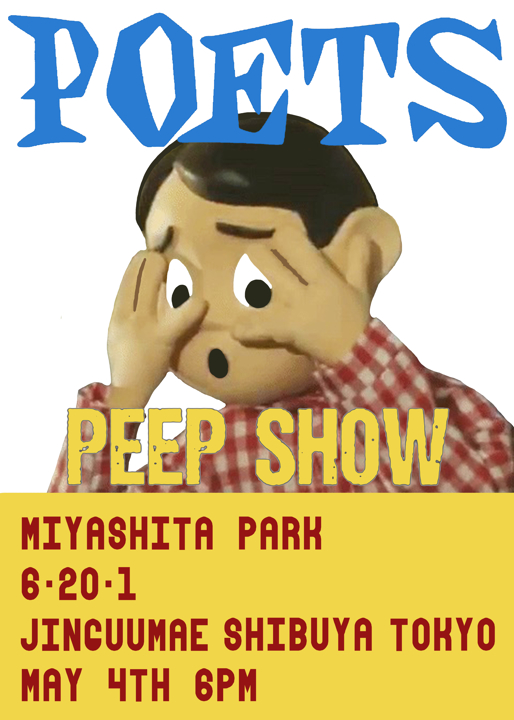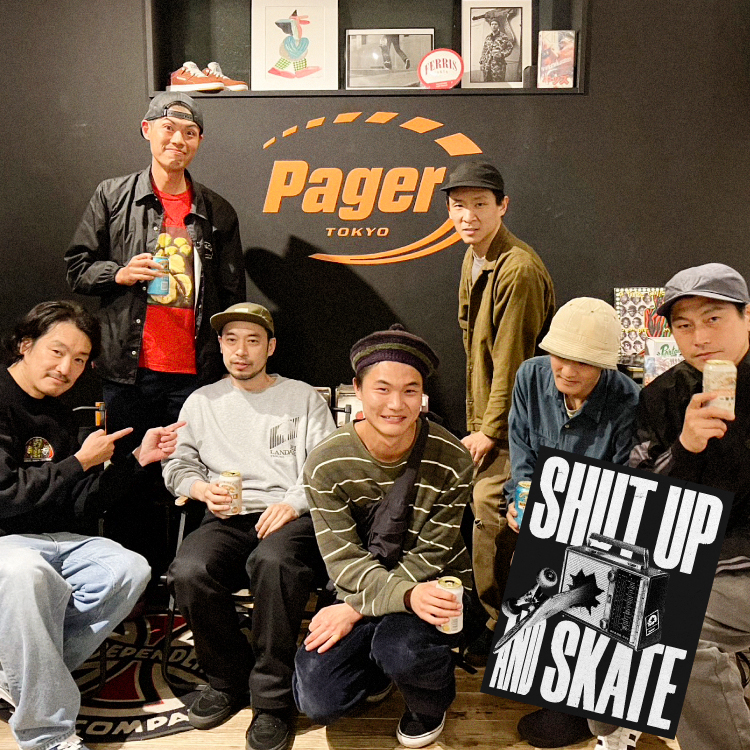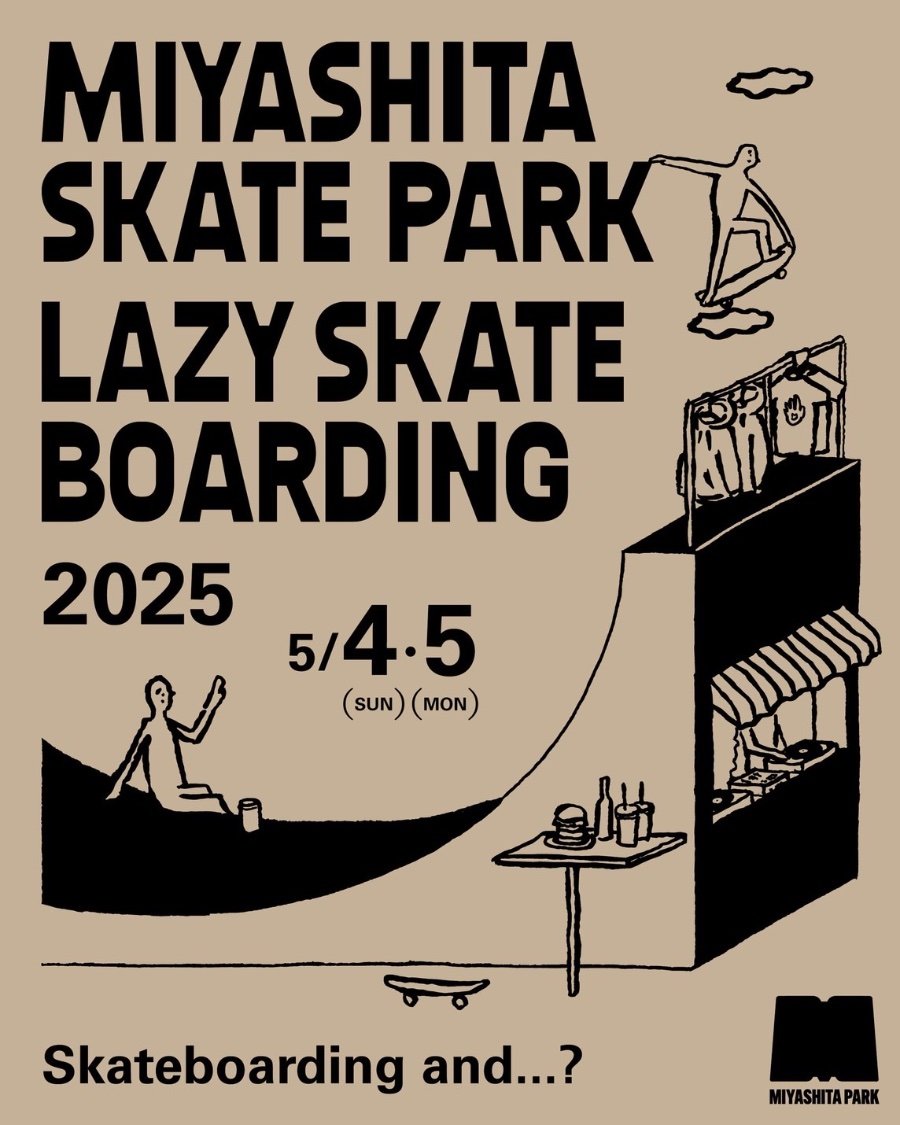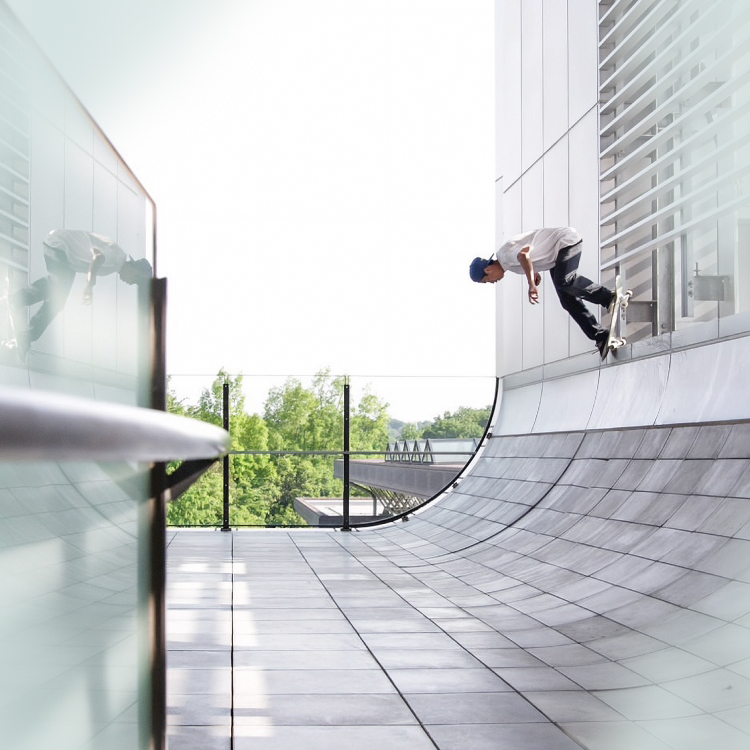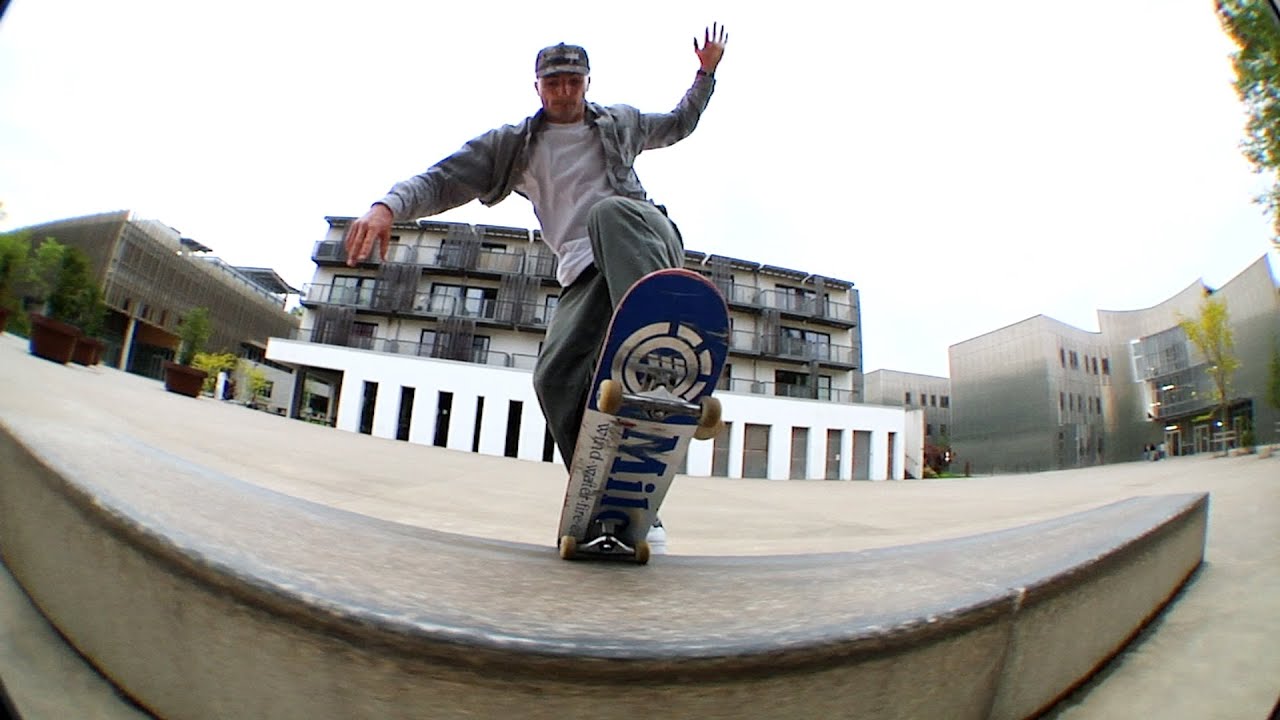A new board company with a worldview reminiscent of '50s film noir. We take a closer look at the PICTURE SHOW by filmmaker Josh Stewart.
──PICTURE SHOW: JOSH STEWART (ENGLISH)

[ JAPANESE / ENGLISH ]
Photos courtesy of Picture Show
Special thanks_BP Trading
VHSMAG (V): You're from Florida. How did you start skating and filming? I heard skate videos attracted you first before the actual skating.
Josh Stewart (J): Well, my older brother was a skater in the 80s and skateboarding was huge. He always had Floridian pros at our house that were staying over so I was just around it all of the time. I was probably about 10 years old at this point and skateboarding was really popular, Back to the Future had just come out with the scene with Michael J. Fox and stuff. My brother had skate videos laying around the house so I started watching them and I feel like that captured my imagination or something more than the idea of skating itself. I think it's because the videos captured the culture so well. The videos all had music I'd never heard before. In the 80s or 90s, you didn't hear music that wasn't on the radio unless you were going to record stores and digging through records. Skate videos were such a great portal into a different culture. Especially being in Florida or the suburbs, it gave you a window into this rich culture. I think it's the same thing that happens to kids who get into punk music or a certain scene, and then you find all this stuff out.
V: Which videos were the first ones you watched?
J: I think it was H-Street and Powell videos. And then I think the video that really, really blew me away was the Alien Workshop video, Memory Screen. At that point I had started skating. And then when I saw that video, it just showed me the power that a well made skate video had. It took me to another world...There's far more to that video than skateboarding. I wanted to make something like that.
V: And you picked up a video camera at some point. Was it lying around in your house like skate videos?
J: Yeah, funny enough...I started skating in 1988 and that's right when the VHS handycams started becoming an accessible thing to regular consumers. It was right in the era where families would buy a little video camera to film birthdays and stuff. My parents had bought a little VHS camera but they never used it. So I started taking it out skating.
V: You eventually started working on local videos in Florida and skate shop videos. You also helped film Welcome To Hell. When was it that you knew that this is something that you want to do as a career?
J: At the time when I was 16 or 17, there weren't independent video makers. It was only big company videos. So I didn't think it was possible for me to make money off it or survive doing it. But as a teenager, I made a local video that only my friends saw. After that, I wanted to do a better one that would get seen by more people. So then I think when I was 16 or 17, I started working on a video with all of the local Tampa skaters.. Tampa had a really good scene because the Skatepark of Tampa opened. You had Mike Frazier and Paul Zitzer skating vert every day. And then a lot of Floridians that lived in different parts of the state were coming to Tampa. So I started filming with these guys just for fun, but I was like, "Man, I could do a video with real parts." That was called Prospects. I mean, nobody's probably ever seen that video, but that was the first one where I made 100 copies and sold them in Florida to skate shops. That was the first time I had the feeling of doing a premiere and seeing people watch your video for the first time. When that was happening, I felt like, "I don't even care if I don't make money doing this, this is such a good feeling." I don't know if I thought, "I want to do this for a living," because I didn't think you could make a living off it, but I knew I wanted to keep doing it.
V: You released the first Static video in 2000. I think that's when Japanese skaters started recognizing your name. How did that project come about?
J: I think I have to give credit to the Skatepark of Tampa and seeing the early Tampa AM contests. It's hard for kids now to relate and understand how it was back in the mid 90s. It's almost like how a circus might have been in the late 1800s where you have these people who are performing these crazy feats and talents that you've never seen before, coming from around the world and showcasing in one place. There was no internet. 411VM had just started and those only came out every few months. So it was seeing these guys from the East Coast, like Jake Rupp and Sean Mullendore, skate in person. I really feel like it was the first time that I really recognized style. When you're younger, you don't understand style. I saw all of these rad talented skaters and it made me want to do a video that showcased skaters from up and down the whole east coast.
V: Did you know Jake Rupp and Sean Mullendore back then?
J: No, I didn't know much about them. So I assumed most other people must not know anything about them. So I found their phone numbers somehow through some friends and just called them out of the blue and asked them about doing video parts for a new video. And somehow, they were down to do it. So, that's how it started. I didn't even know what the video was going to be yet and once I started traveling, I went up to Washington DC. I was like, "Damn! I've never seen any of these guys. I want to do a Washington DC section." So it was more like starting to travel and meeting people that got me stoked to keep adding sections to the video. Because back then, like I said, there was no internet or social media. So you didn't know about all this stuff. So finding out about it, I was like, "I want to be the first one to show these people to the rest of the world."
V: I still watch Bobby Puleo from Static II and Quim Cardona from Static IV. They're totally different types of skaters, but those parts are incredible. How was working with Puleo?
J: It's weird because we have a long history together now. But at the time working on that project, it was a blast, because he's hilarious, his skating is so interesting, but also, he's a real big asshole. Haha. He has this weird relationship with everybody he works with, where you're fighting with him half the time while you're filming him. But especially at that time for me, for that video, every clip we got was precious. It was like gold because he reads a spot in a way that nobody else does. He looks super interesting skating everything. It was a lot of fun and it was just a constant back and forth, but I think it helped. His tastes influenced the way I see things a little bit too. It helped shape the way I see some stuff. Then Quim is completely different. He's on a different wavelength and I want people to see him the way I see him. He's hard to nail down. It's hard to get him to a spot and have him actually show up, and have him not show up with a bunch of different people. He lives in New Jersey and I'm in Brooklyn so we'd make a plan. "Okay, next week we're going to meet in Manhattan." And a lot of times he just wouldn't show up. But when we would finally meet up, I get in his car and then he just drives around all day, and he'd be hollering at girls and taking me to the restaurants and going to a recording studio or something. Getting anything out of him always felt like you're fishing all day, hoping, just hoping you're going to get a bite. But when you did, it paid off. There's nobody like him. In the history of skating, I think Gonz is maybe as close as you could get, butQuim's style is just the best ever. I just felt lucky every time he actually showed up, and we actually got clips on film. He's also just fun to be around too, because he's so positive and funny. But his skateboarding is just so satisfying to watch. I think his style embodies the essence of pure, raw street skating better than maybe anyone.
V: Yeah, those video parts are incredible. When did you move to New York from Florida?
J: I moved to New York to start working on Static III. So it was in 2006. I was just going to stay there for a couple of months to film. Then after my first day, I was like, "Dude, I have to live here."
V: How did Theories of Atlantis come about? It was a website before it became a distribution company.
J: When I made Static II, we made a website for the video to help promote it. And then we made another new website for Static III and as we were finishing it I realized it was stupid to make a website for just one video, so I decided to start a website that was permanent and wasn't just for one video. So I came up with a name that captured a lot of the stuff I liked to read and talk about and that could be a blog that I would write stories and do interviews on. And I wanted to be able to carry other people's videos and try to make it like a hub for independent skate videos around the world. Then a few years later Soy Panday and Vivien Feil were starting Magenta, and they asked me if I would carry some of the boards on our web store and of course I was down. That's how it started. Puleo was riding for Traffic at the time and we kept talking about how it'd be rad if we could carry Traffic boards, and get Jahmal to let us help distribute Hopps. Back in the mid or late 2000s, there were only big companies like Baker and Girl. Small brands weren't really getting much love. I thought we could bring small brands together, kind of like a collective power for the East Coast and start pooling our resources, and getting more things going. It slowly grew from that idea and my friends would start a new brand, like Paul Shier starting Isle, and it just made sense for us to distribute them. And it grew to what it is now.
V: What's the importance of making a home for those skater owned brands? What's the thing about those brands that you get attracted to?
J: Every year I try to do an article about our top favorite 10 videos of the year. Adn always, always the best videos are the indie videos. For the guy making the indie videos, it means so much to him, and he's doing it for the right reasons. I mean, there's definitely small indie brands that are doing it just to try to make money. They're not all these altruistic Puritans or whatever. But this year, did you see that video from Croatia?
V: Finta?
J: Yeah. Videos like that, where it's like, if I basically just saw one quick clip from it, the filming isn't great, it's filmed with a crappy camera. But it's the most entertaining video of the year, and it's got so much heart and fun and good skating. It's representing a part of the world that never gets any attention. That's the stuff that I get stoked on. In Florida, we were doing a lot of stuff for years, and nobody gave us attention because California ran skateboarding for so long. Now, I always root for the underdog. Indie brand is typically run by the guy who is filming the video and also involved in making the graphics by hand and also the one doing sales and funding it out of his own pocket. You have control over what you're doing and it doesn't become only about the money, I think there's a lot more to it. With you telling me you like Quim and Puleo, then I know you appreciate the art in skateboarding more than the sport and the business of it. I think it's important because the small brands are protecting the art of skateboarding, and the craft of filmmaking and art, where the big brands are trying to sell our culture to everybody and make as much money as possible. I think the smaller brands are better at keeping it within the community, and making sure we don't lose the culture. It's now very possible for our culture to be lost with the Olympics and skateboarding is getting popular again, but I think there will always be an underground that's doing rad things and keeping it protected.
V: You've been distributing those skater owned indie brands for a long time now, and you've started your own board company. How did you start Picture Show?
J: Well already had Theories as our own brand that encapsulates what we're doing as a distribution and everything. But we always have good friends that are involved in what we're doing, who ride for Theories, but we don't have a board brand for them to call home. Eventually, it was obvious, we needed to have something, a board brand that we could have these guys ride for. Also, we have a couple friends whose artwork was really inspiring. It was more like we would use some of their artwork for Theories stuff. But it had so much depth to it that I felt like you could make a rad brand out of the whole feeling that they created. That's the thing too, it's similar to a skate video. Once you have an idea, it's not just a theme, but a feeling that you want the video to capture and portray to the world. And then you become obsessed with what I have to film or what music and what skits or whatever I have to capture to give this feeling to people when they watch the video. Picture Show is like another video for us. It's like, "Man, we wanted to create this."
V: Picture Show has got a distinct vibe.
J: Originally it's this guy Bryce Mandel. He's a skater from California, and he does a lot of drawings that are based around 1950s Hollywood era kind of stuff. Like Film Noir, kind of feeling. Like I said, how that Alien Workshop video captured my imagination, there's something about his artwork and his personality that really sparks my imagination. Also the analog stuff from the 80s, like weird ads and the look of that stuff, trying to tie that in together, the things that we think are awesome. When I was a kid there was a magazine called Boy's Life, it was for camping and stuff, but in the back they had these weird ads, like x-ray vision goggles, or sea monkeys, where you mail away and you get this bullshit that isn't at all like what they say it is. All that weird stuff that doesn't exist anymore. There were those fun things where you don't know what to expect, where the anticipation is more fun than the actual thing you receive. It's the same with shooting film. It's expensive and heavy and annoying to deal with, but the process is so rad because you'd never really know what it's going to look like until you get it back. Then there's that anticipation of, "All right, here it goes. Let's see it." All that kind of stuff, it inspires so many great graphic concepts and ideas. Then we met this guy named Josh Courlas, and he does this digital artwork that is very different from Bryce's stuff but has a really similar, eerie feeling to it. It feels basically like different parallel universes. They're a great fit together.
V: You've been making skate videos for more than two decades now. Are you going to be responsible for how the videos for Picture Show is going to be?
J: With Picture Show, I think it would be good for us to have a different video guy do the videos. Just to give it a different look because I obviously have a style that I can't get away from. But I'm too scared to let somebody else do it. At the beginning, I feel like I want to do the first couple of videos. For this new one, I wanted to try to come up with something that takes you into the world of Picture Show. I mostly worked together with Taylor Nawrocki for this video, and he has his first pro board. So he's got the full part at the end. He and I have been filming a lot the past couple of years. We've been shooting stuff in this basement, trying to remake old classic film scenes in our own style. Then we have a team montage at the beginning. I tried to make it feel like Film Noir, like the classic 1950s kind of shots. But in a skate video, you can't really have too much of that kind of stuff. People just want to see skating, so we'll see. It's a tough balance.
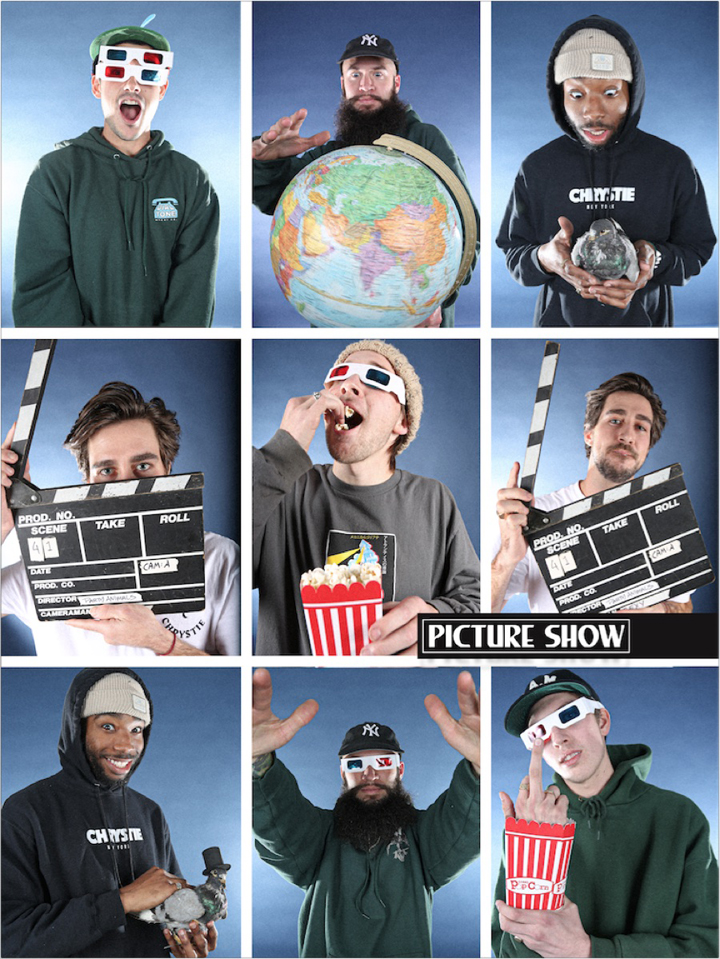
V: I can tell that there's a lot of dedication. What do you look for in skate videos?
J: I don't like skate videos that are just skate footage and music. Everybody can skate well these days... I don't care about that, I want something that basically is a new way to see skateboarding. Even if it's not done super well, as long as it's different. If I'm going to do a new full length video, it's really hard for me to figure out a new look, a new feeling. That's why it takes me so long. I've been working on a separate project of my own, that's been taking me five years, and it's so hard to finish something. These short edits are nice, because you can actually start, finish it and get it out to the world. But the worst part is you don't get to see people enjoying it. That's the best part of making a skate video. Seeing how people react at the premiere, seeing the skaters in it getting the praise and the applause. What sucks about the online stuff is we're all sitting in our rooms, watching it on a tiny screen. It just ruins the experience.
V: It can take hours, even days to get a single clip. How do you keep your fire going? It's a lot of work.
J: Haha yeah, often you won't get a clip after a couple days of filming... I did it for a long time in Florida where I had a car, and we would drive to spots. The past 15 years, I've lived in New York where we don't have cars and I have to carry all my gear on my back. I work all day in the office and then on Saturday I go out filming. I bring my 16 millimeter stuff, my VX, my photo gear, it's all on my back. It's brutal but at the end of the day you feel good, even if you don't get clips you feel like you really worked hard. As far as what keeps me going, half the time I'm working with my friends. Going out with Jahmal, or Steve Brandi, it's like a family. That's how we hang out. I don't drink, I don't go to bars. Filming is kinda how I hang out with my friends. And then, when you're working on the edit and you find the right song, and you put it to that skate clip and the 16 millimeter footage works just right...it just makes it all worthwhile. All the other parts of the process are such a struggle, but when all the pieces fall into place...it feels the way it all did 25 years ago when it was a new experience. I think you just keep chasing that feeling.
V: Do you ever think about going out of the skate community and working on movies and stuff?
J: Yeah. I used to think of it a lot. Who knows, I might do that someday, I don't know. But obviously, I love doing this. The past five videos I've done, I swore it's definitely the last one. I know a lot of filmers who have retired at age 25/26 years old. I always think it's going to be my last video and then I'll end up filming with some skater I've never filmed before or something will happen and it lights that fire again. It's like, okay, just one more. One more.
V: Where do you want to bring your brand? What's the future for Picture Show?
J: With Picture Show, it's like, we're still shaping the feeling, you know? Trying to build the experience that the brand is supposed to bring to people. I just want people to appreciate and get stoked on the team and we want to give everybody the feeling that we're trying to create. Any artist or painter, they just want people to experience their work. I guess it's the same thing, I just want to work with the skaters and artists to help create a new experience or a new world and for people to experience it and appreciate it. We have the right team and the right artists and it just all happened organically. I just hope it keeps going that way, not forcing it and letting it grow organically. Every rad brand has had those first 2-3 years where it really blossoms and exposes the world to a new experience. So hopefully we'll get there too and we'll just get to keep making fun projects and creating rad experiences for the team and all of us involved.
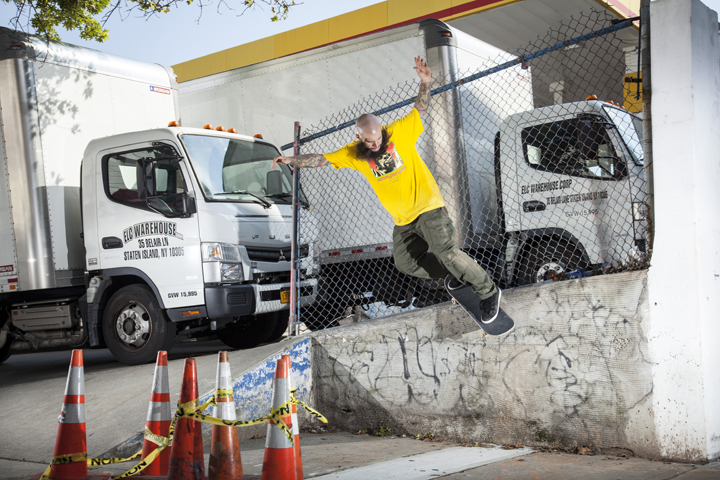




Josh Stewart
@mystaticlife
@pictureshowstudios
Born in Florida. Known for his Static series, he's a renowned videographer and the owner of Theories of Atlantis, home to many small brands. He currently runs Picture Show and works on various video projects.












